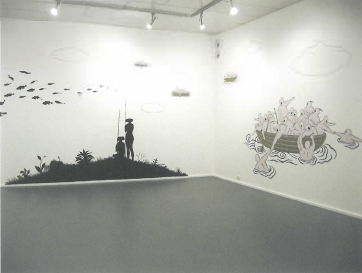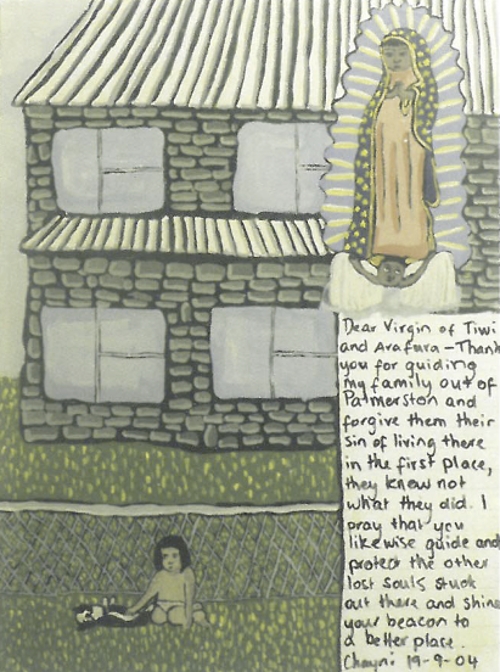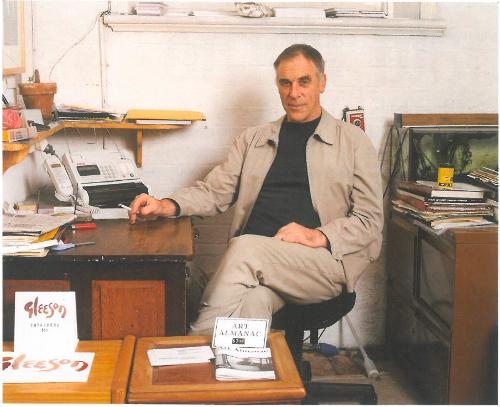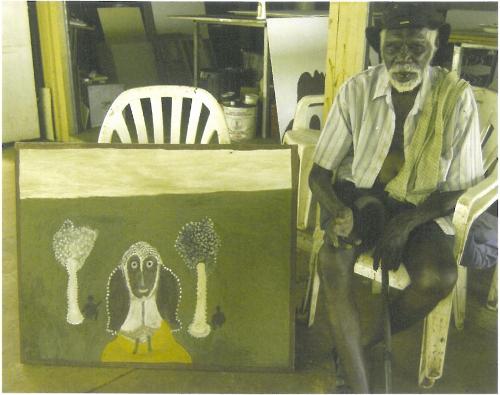
Over the past few years 'border control' has become a contentious issue for Australians. We can remember the incidence of the so-called 'Children Overboard' affair and more recently the abandoned parliamentary bill to process 'Illegal entrants' on 'off shore' Christmas Island. Guan Wei in Unfamiliar Land seeks to grapple with these issues in reminding us of our recent colonial past where 'Terra Australis' was declared 'Terra Nullius' and 'settlement' proceeded at great cost to the indigenous population.
Unfamiliar Land is a single epic painting broken up over 24 separate canvases in the tradition of Chinese painting where many scrolls were hung side by side to make a finished work. The artist uses a Chinese stylised sea pattern borrowed from blue and white porcelain and integrates it with European map-making of an earlier century complete with scary sea monsters to deter would be mariners from sailing too far from their known land. Floating helplessly in the sea are boatloads of fattened and faceless soft pink figures struggling to make their way to a barren looking shoreline peopled with black silhouettes that can be made out to be characters from a scene of the early days of Australian 'settlement'. The imagery of the sea pattern complete with the boat people is extended onto the actual three other walls of the room and in transference they are rendered into a more palatable form as decorative wallpaper.
In 1989 Guan Wei found himself facing his own displacement from his native China. Whilst artist in residence in Tasmania the now familiar images of troops and tanks moving in on the protesters of Tianamen Square were broadcast around the world and, like so many of his contemporaries, he sought and found refuge in a foreign land.
The work Looking for Enemies is an installation housed in another room of the gallery and deals with the perceived idea of the enemy in our midst. Using a printed copy of the famous Song Dynasty painting scroll Qing Ming Shang He Tu that depicts the daily life of people going about their business in the old river town Guan Wei inserts menacing black silhouettes of troops and tanks into the painting. He also projects them onto the walls magnifying their size and thus the perceived threat that they pose to the viewer. What I remember as 'reds under the bed' is now significantly upgraded to a 'war on terror.
With good humour and considerable graphic skill Guan Wei's third work titled Mapocalypse (2006) reminds us of the difficulties we face in addressing the pressing problem of global warming. When large economies with large carbon emissions refuse to sign the Kyoto Protocol the rest of the world is left gasping at the bureaucratic reasons offered for non-compliance. A room of opened files offering meaningless circular arguments to maintain the status quo cover the walls of a room that doubles as a board room for meetings on climate change that no-one will attend.
The exhibition is accompanied by a poetic essay written by writer and diplomat Nicholas Jose who spent some time in Beijing where he first met Guan Wei in 1986 when contemporary Chinese painting could only be shown in private homes and friendly foreign embassies.












